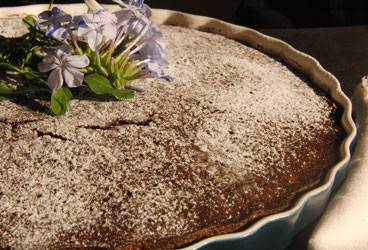
Though most cruisers keep vinegar aboard, few of us appreciate its versatility. Everyone knows that different varieties of vinegar are a cook’s delight, used in everything from salad dressings to glazes and sauces. But there are many uses for this staple both outside and inside the galley that you may not know about. We keep Eurisko, our Creekmore 34, well stocked. White or cider vinegar works in all of the following suggestions.
Outside the galley: Use a 50/50 solution of water and vinegar as a hair rinse. When conserving water is important, this technique reduces the amount of water needed to rinse out shampoo.
Adding half a cup of vinegar to your laundry wash water helps remove dirt and stains.
Vinegar can loosen the sticky residue left by labels and tape. Because vinegar neutralizes urine odors, you can also use it to clean the head or mop up pet accidents.
Aside from cleaning, vinegar can be employed for other onboard chores. For instance, uncured epoxy can be wiped off tools with vinegar, and a few strategically placed drops work wonders to release stubborn nuts and bolts.
My favorite, most often-used vinegar trick is for corroded zippers. Let a few drops of vinegar sit on and around the corroded zipper pull. The vinegar eats away at the corrosion overnight or sometimes within a few days. Apply only as much force as you’d normally use to pull the zipper. If it doesn’t budge, give it more time and vinegar. Before we tried this method, we threw away countless items because of now-useless corroded zippers.
In the galley: Include a bit of vinegar in marinades to help tenderize meat. After cutting an onion, rub vinegar on your hands to remove the odor. Set out an open dish of vinegar to keep fruit flies away. When your galley-sink drain emits a foul odor, is slow to drain, or is completely clogged, try the following: Pour baking soda as far into the drain as you can. (I use a skewer to push at least half a cup of baking soda deep into the drain.) Heat two cups of vinegar. Slowly pour hot vinegar into the drain. If you immediately plug the sink, the pressure will help push whatever is clogging it out the through-hull. Only try this if you trust your plumbing fittings! Otherwise, the baking soda/vinegar mixture will bubble up into the sink, often bringing the offending particles with it. Continue pouring the hot vinegar into the sink until all the baking soda is neutralized.
But here’s the icing on the cake: When you’re in a remote area and out of fresh eggs and milk, vinegar can satisfy your sweet tooth when used to make this delicious chocolate cake. You can play with this recipe: Drizzle with a simple icing glaze, dust with confectioners’ sugar, or frost. Add ground walnuts if you want—the possibilities are endless! Garnish with edible flowers, such as the jasmine in the photo.
Eggless Chocolate Cake
- 3 cups flour
- 2 cups sugar
- 6 tablespoons cocoa powder
- 1/2 teaspoon salt
- 2 teaspoons baking soda
- 2 cups cold water
- 3/4 cup cooking oil
- 2 teaspoons vanilla
- 2 tablespoons cider vinegar
Mix dry ingredients in a large bowl. Make three increasingly larger holes in the dry mixture. Pour water and oil in the largest hole, vinegar in the medium-sized one, and vanilla in the smallest. Mix well. Pour into a lightly greased 9- by 13-inch pan or similarly sized round baking dish. Bake at 350 F for approximately 30 minutes. Serves 10.








